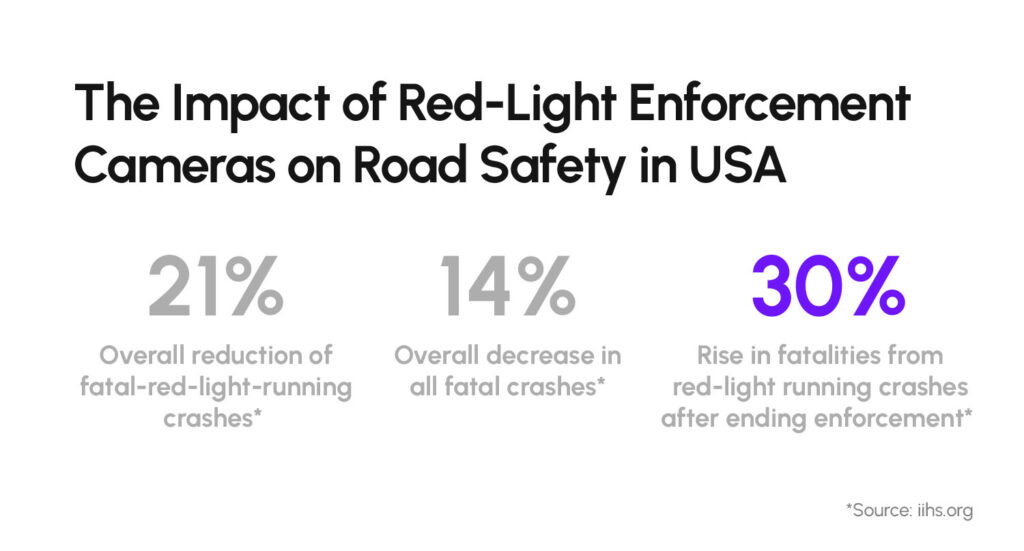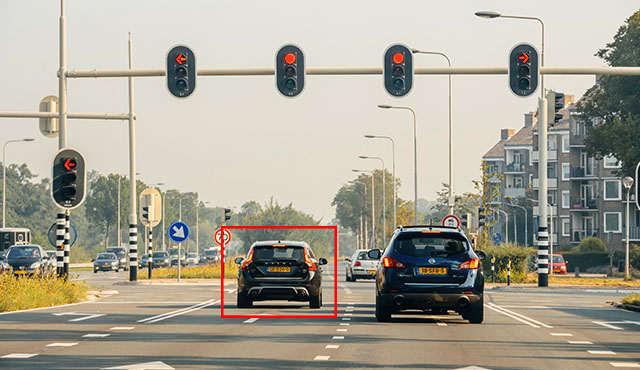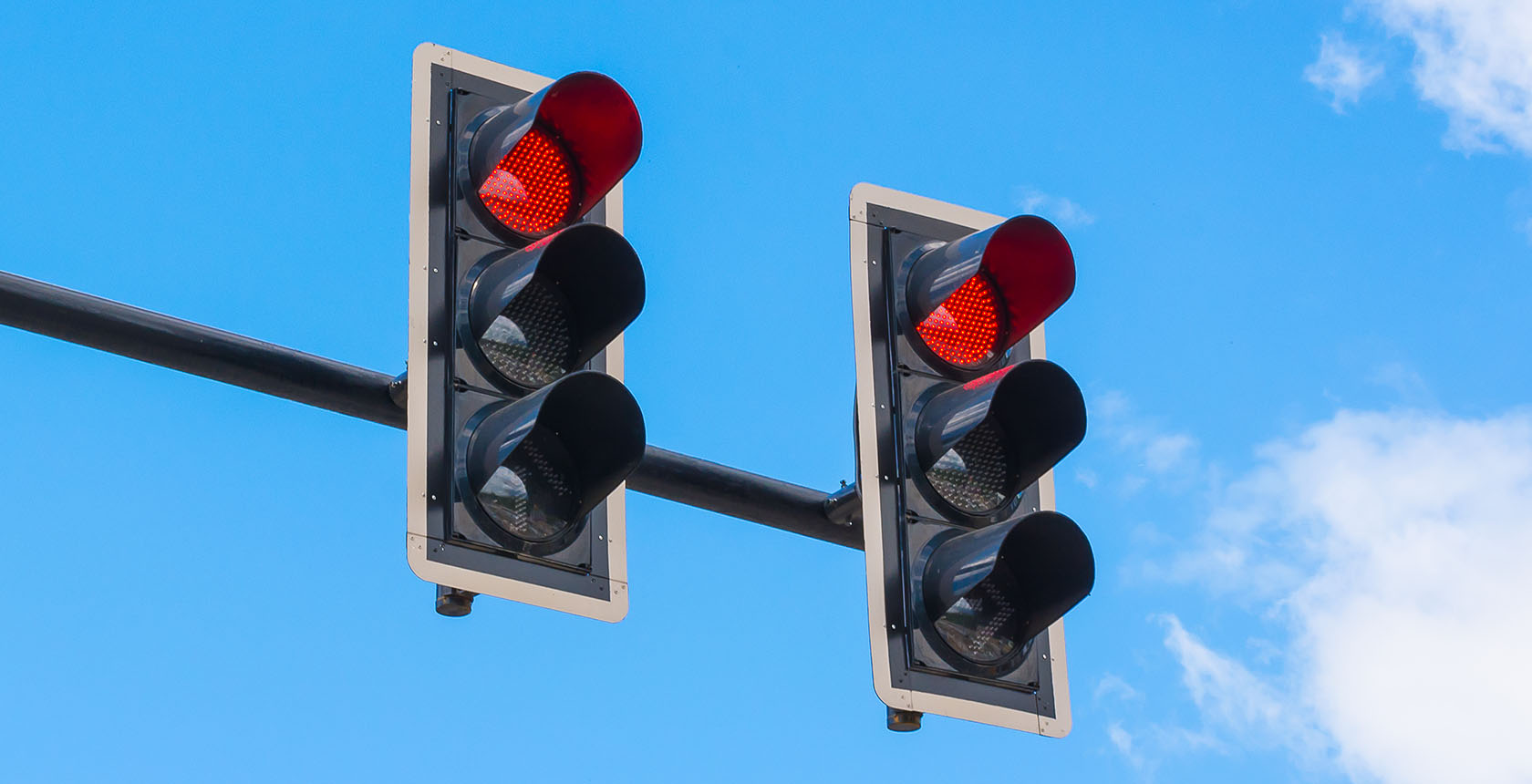In today’s cities, technology is vital in managing traffic flow, enhancing road safety, and enforcing laws at busy intersections. But how exactly do street light cameras and traffic light cameras work? And what’s the difference between the cameras we see perched above intersections and those used solely for enforcement? This blog post will dive into the key technologies at work: red light traffic cameras that detect violations, traffic cameras that monitor congestion, and traffic sensors on traffic lights that capture data to optimize flow. We’ll explore how each device operates, how intersection cameras contribute to safety, and what factors to consider when selecting the right technology for traffic management or red light enforcement.
These innovations go beyond enhancing compliance and reducing accidents; continuous advancements and global implementation set the stage for a new era in traffic management. Advances in AI and machine learning are pushing traffic technology forward, promising traffic monitoring and red light systems that can predict and manage traffic patterns, respond dynamically to real-time conditions, and make streets safer and more efficient for everyone.
Let’s take a closer look at how these technologies are building safer, accident-free cities that benefit us all.
Red Light Cameras vs. Traffic Cameras vs. Traffic Sensors – A Comparison of Technologies
Imagine a traffic management system where these technologies work seamlessly together to create safer, more efficient roads. They don’t just monitor—they anticipate, react, and transform the way we move.
That said, I’d like to clear up a common misconception: what we often call red-light cameras are a specific type of traffic camera designed to monitor and enforce compliance with traffic signals.
Let’s dive into these life-saving technologies together and discover how they’re transforming road safety and efficiency!
- Red light cameras are specifically designed to enforce traffic laws by capturing images of vehicles that run red lights, helping to reduce accidents at intersections. They are particularly effective in deterring dangerous driving behavior and improving compliance with traffic signals.
In the past, red light enforcement systems relied on sensors embedded in the road or cameras mounted at red lights at the intersections. These systems were triggered when a vehicle entered the intersection during a red traffic light. Upon detecting a violation, the red light traffic camera would capture multiple images or video footage of the vehicle, including a clear shot of the license plate.
Today, AI-powered video analytics have revolutionized traffic monitoring, offering a simpler alternative to embedded sensors, which are labor-intensive to install and challenging to maintain. A red-light camera based on video analytics is much easier to set up – often, an existing CCTV camera paired with an additional device, such as Adaptive Recognition’s Enforce Box, is sufficient to handle the entire task.
The Enforce Box can upgrade an existing camera to make it “smart,” or users can choose a single, all-in-one solution by installing a smart camera capable of detecting multiple traffic violations (Adaptive Recognition’s Einar vehicle access control camera). This modern system not only monitors red lights but also captures images of violations such as driving in the wrong direction, using bus lanes, or stopping where it’s not allowed.
The images captured by such a system, along with data such as the date, time, and duration of the red light, are sent to traffic enforcement authorities who review the footage to confirm the violation before issuing a citation. Stop light cameras operate continuously, offering a non-intrusive and effective method to monitor high-risk intersections and reduce accidents caused by red-light running.
- Traffic cameras, on the other hand, provide continuous surveillance of traffic flow, enabling authorities to monitor congestion, detect incidents, and support law enforcement by documenting violations such as speeding or reckless driving. These cameras enhance public safety by allowing rapid responses to accidents and real-time traffic management.
Typically positioned at key locations like intersections, toll booths, and busy highways, the traffic light camera transmits continuous video footage. Therefore, these traffic surveillance cameras enable authorities to manage real-time road conditions and respond quickly to incidents. While the traffic signal camera is instrumental for surveillance, it does not automatically enforce laws or issue fines.
The camera on traffic lights plays a crucial role in law enforcement, congestion management, and improving road safety by providing constant oversight of traffic flow and incident detection.
- In contrast, traffic sensors focus on gathering data regarding vehicle presence, speed, and volume without capturing visual information. These devices are designed to detect and measure key aspects of vehicle movement on roads, including traffic volume, speed, and vehicle presence. Typically embedded in the pavement or mounted alongside roads and intersections, they utilize various technologies to gather data.
Common types include induction loops, which create an electromagnetic field to sense vehicles as they pass; radar sensors, which use radio waves to measure speed and distance; and infrared sensors, which detect heat signatures or movement.
When a vehicle approaches a sensor, it sends a signal to a central traffic management system, allowing for real-time data collection that can adjust traffic lights, manage congestion, and optimize road usage. These technologies are gradually being replaced by traffic light cameras and video analytics systems, as they require cumbersome maintenance and, in the case of infrared sensors, offer lower accuracy compared to modern video-based solutions.
By working together, these technologies enhance road safety, reduce congestion, and optimize traffic flow.
Let’s take a closer look at the influence these technologies have on road safety and the improvements cities have reported since their adoption.
The Impact Traffic Light Enforcement Cameras Have on Road Safety
Traffic enforcement technologies, such as red light surveillance cameras, cameras at traffic lights, and traffic sensors are proving to be game-changers in enhancing road safety across the United States. These remarkable technologies are not just about monitoring traffic; they actively contribute to saving lives and reducing accidents at intersections.

Research has demonstrated a 21% reduction in fatal red-light-running crashes per capita in cities that have implemented red light cameras, along with a 14% decrease in all fatal crashes at signalized intersections. This means that traffic lights with cameras lead to safer roads and more responsible driving behaviors.
Notably, cities such as Los Angeles and San Diego have experienced significant benefits from these systems. Los Angeles reported a 30% decline in red light running violations, while San Diego documented a 25% reduction in serious injury crashes linked to red light running. These statistics demonstrate the effectiveness and significant impact that these cameras have on public safety. According to the Insurance Institute for Highway Safety (IIHS), these programs have already saved nearly 1,300 lives across 79 major U.S. cities by 2014, and the trend continues to improve. This highlights just how vital these cameras are in creating safer communities and preventing tragic accidents.
Moreover, a survey showed that two-thirds of drivers in cities with established red light camera programs support their use, demonstrating a strong public endorsement of this safety measure. Conversely, cities that have deactivated their camera programs have seen a disturbing 30% increase in fatal red-light-running crashes, reinforcing the argument for their continued use.

As traffic safety continues to be a pressing concern, the effectiveness of red-light cameras in saving lives and reducing severe injuries cannot be overlooked. Their presence is becoming increasingly vital in fostering safer roadways, making it clear that these technologies are not just about enforcement – they’re about protecting lives.
How to Create Safer Intersections with Red Light Enforcement
To effectively create safer intersections and save lives, choosing the right technology is crucial when setting up or upgrading a traffic monitoring system. It’s not always necessary to install a completely new system; often, the best solution is to upgrade your existing surveillance system.
Many modern upgrades—such as integrating advanced analytics, updating software, or adding new sensors—can provide substantial benefits. For instance, Adaptive Recognition’s Carmen Box and Enforce Box add significant value to any traffic monitoring setup without needing a complete system overhaul. Both systems are powered by AI and equipped with advanced analytics capabilities.
The Carmen Box enhances automatic license plate recognition (ALPR, a.k.a. ANPR) accuracy, while the Enforce Box supports 12 law enforcement applications, including red-light enforcement, illegal U-turns, wrong turns, emergency lane usage, white-line crossing detection, and stop violations, among others, providing precise vehicle tracking and incident documentation. These upgrades can optimize existing infrastructure and can harness cutting-edge technology while maintaining cost-effectiveness.
When creating a traffic management system from scratch, one should focus on key considerations for optimal performance. First, identify your specific objectives, whether for enforcement, monitoring, or both. Choosing the right smart traffic light camera type is essential! Do not forget to evaluate factors like resolution, low-light performance, and compatibility with existing infrastructure. It is also important to consider what software the traffic surveillance camera will run— as there are significant differences among ANPR software options. These choices will greatly influence the performance of the system.
Proper installation, setup, and positioning are also critical to maximize coverage. By carefully considering these elements, you can develop an effective traffic enforcement system that enhances road safety and traffic management.
Reach out to our experts to discover a customized solution that meets your specific needs, ensuring you have the optimal resolution and computing power necessary for your tasks.
Conclusion
In conclusion, the technologies discussed in this blog post, such as AI-enhanced red-light cameras and smart traffic systems, are vital tools in the fight for road safety. These cameras have proven to save lives by reducing accidents and providing real-time data to manage traffic more effectively. Implementing these systems can create safer intersections, allowing authorities to respond swiftly to violations and changing conditions.
As cities adopt these advanced technologies, we can foster a future where road fatalities are significantly diminished, if not eliminated. By prioritizing the installation of these life-saving systems, we take proactive steps towards creating safer streets for all. Together, we can build a world where every journey is safer, and ultimately, prevent unnecessary tragedies on our roads.


